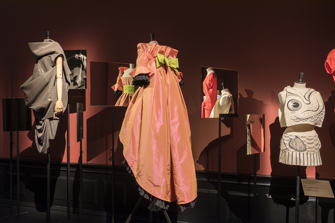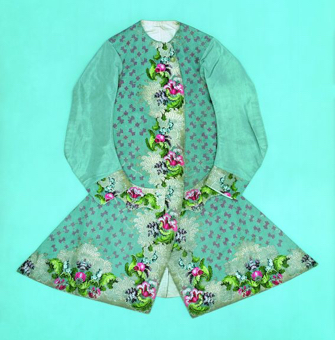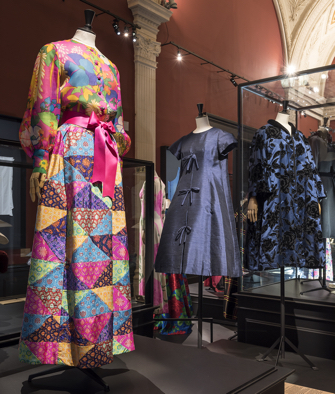
There is something especially moving about seeing clothing once worn by an admired historical figure that goes beyond the impression given by a visit to the person’s former home or grave, I suppose because clothing is so personal and often bears traces of the body shape and movements of its former owner (think of the “you” shape your favorite pair of jeans retains when you take them off). It can even provide information about the wearer: the size of George Sand’s at-home dress, on show in the exhibition “Anatomy of a Collection” at the Palais Galliera, for example, informed me that the 18th-century writer and feminist hero was much taller than I had imagined her to be.
There is a historical figure here for every taste, interest and era. Royalists will be thrilled to the point of tears to see the small suits worn by the dauphin who would never be Louis XVII when he and his family were imprisoned in the Temple in Paris during the Revolution (he died there at the age of 10). Other items of clothing worn by French royalty include Marie-Antoinette’s corset (I wonder how she would feel about people studying it in a vitrine).
Napoleon is represented by a waistcoat and the uniform he wore as a member of the Institut d’Égypte, which he founded to “make a record of discoveries and perfect the arts and sciences” in Egypt during his campaign there. A slim, simple dress in white muslin worn by his wife and eventual empress, Josephine, is also on show. How she got away with wearing it is a mystery, since Napolean had banned muslin because it was produced by his enemies the English in India.
Some of the more splendid items on display are a beautiful embroidered cloak given by the viceroy of Egypt, Muhammad Ali, as a wedding gift to Napoleon’s second wife, Marie Louise, in 1810; an extravagant peacock and lophophore muff that belonged to Princess Mathilde, a niece of Napoleon who was famous for her Parisian salon; and a sumptuous flower-

embroidered silk waistcoat with sleeves worn by Claude-Lamoral II, Prince de Ligne, an avid gardener and apparently a true dandy, whose nephew described his lifestyle as being nearly as magnificent as that of Louis XIV.
Another section shows haute-couture pieces worn by the rich and famous, some of them stunningly simple, elegant and timeless – heiress Olga Deterding’s 1960 black silk coat by Balenciaga, for example, or Suzy Delair’s 1950 draped, one-shoulder evening gown by Grès – while others, like a 1969 Yves Saint Laurent outfit consisting of a multicoloured blouse and long patchwork skirt, worn by the Duchess of

Windsor, looks dated and fairly horrendous today.
Other pieces have historical significance, among them a real Phrygian bonnet, c. 1790, along with its original box, and the redingote and vest worn by journalist Armand Carrel when he was killed in a duel with Emile de Girardin in 1836.
One of the best things about this exhibition is that it also shows us the other side of the coin: clothing worn by ordinary people and workers in different periods. Among them are a red convict’s uniform from the first half of the

19th-century; a frilly maid’s apron from 1890-1900 that looks to be straight out of “Downton Abbey”; a hairdresser’s smock from around 1940; a well-patched worker’s bleu de travail from the late 19th century; and a Red Cross nurse’s uniform from World War I. Other pieces show how the less fortunate used inferior materials to copy the styles worn by the upper classes.
The exhibition ends with some madcap prototypes created by couturiers for their fashion shows, including Martin Margiela’s wig coat (2009) and Jean Paul Gaultier’s orange
.jpg)
cone-breasted evening gown (1984).
This wide-ranging show seems to have no other point than to pull out of storage some of the precious and rarely exhibited pieces in the Palais Galliera’s collection. While they are almost all fascinating and well worth seeing, I think the show might have worked better if it had been more focused on one of the many different themes presented: clothing worn by historical figures, say, or how the fashions of the day were interpreted by ordinary people.
Favorite
